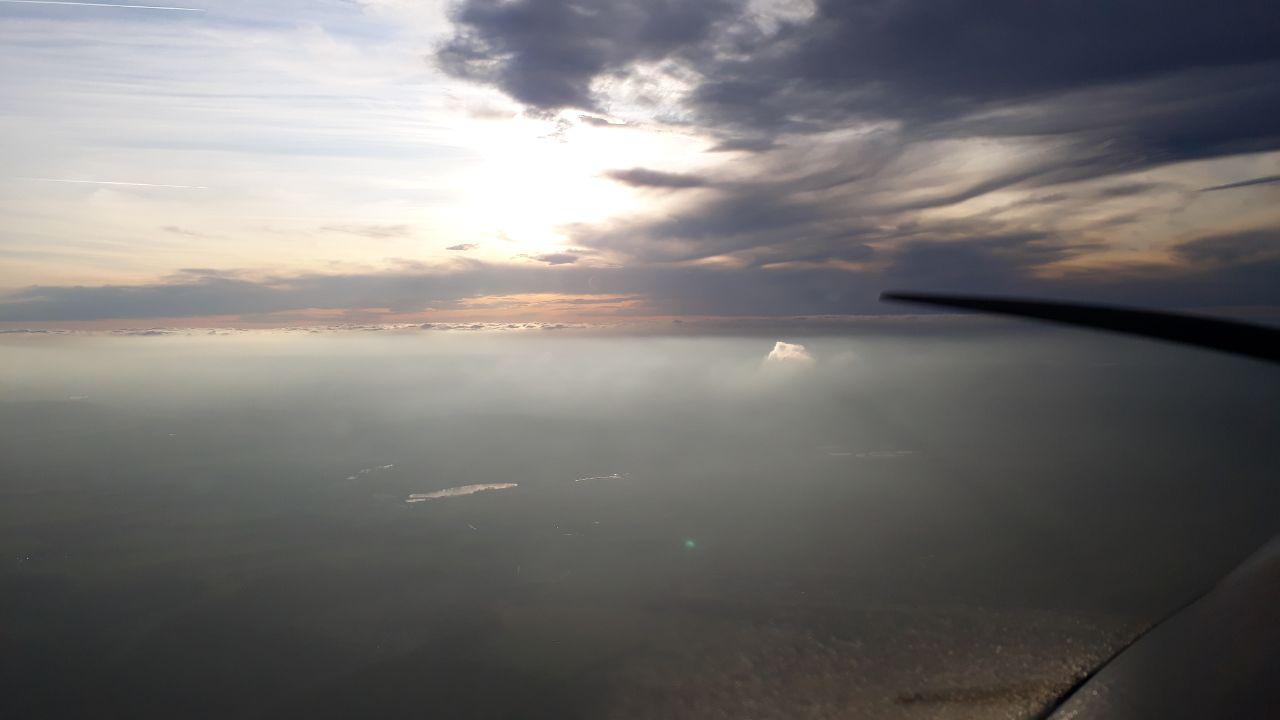Solo cross-country flight of more than 300 nautical miles (it is about 540 km) with at least two full stop landings in different airports other than a departure airport is a requirement for any Commercial Pilot. This is correct both for the EASA and FAA, but FAA also requires that one of the airport should be located at least 250 NM from the departure point.
It means that in Europe it is possible to pick many airports nearby and fly a route between them considering that the total distance will be more than 300 NM. Some schools advice the routes where the most distant aerodrome is located at about 50 NM, which barely qualifies for a “normal” XC requirement in the US, and fly sort of a large circle around the home airport.
There is one more less obvious difference. In the US it is officially allowed to fly this long XC with the instructor considering that he does not manipulate flight controls, and both can log PIC time. In Europe only one person can long PIC time in a single-pilot airplane, so most generally this long XC must be solo. It could be done with the instructor if he does not log his flight time and does not interfere by any means. But better to fly solo than trying to explain why you still need a safety pilot if that question arises.
It is very important to know the requirements for each particular country: this long XC can definitely qualify for both FAA and EASA if it is a solo flight with one full stop in an airport more than 250 NM from the departure point and another full stop anywhere else.
Another important part for this flight – it must be fully done under VFR bor being valid for Czech CAA. If it has a night or IFR part, it will not qualify – I got an official response about that.
I did have both night and IFR part for my long VFR cross-country since I returned after sunset then. I would be OK if I logged that part as a separate flight, but I did not, and by the Czech CAA requirements I needed a pure day VFR solo XC.
The weather in Czech Republic in October is not perfect, and the sunset is before 5 pm. But today the sky was almost clear, the visibility is perfect, and that happiness lasts from about 10 am to the late night. That kind of day happens once in a week or even less frequently now.
The problem was that all Cessnas were fully booked, and the Tecnam was booked for some more than an hour in the middle of the day. I needed at least 4 hours for that flight, and that means that Tecnam was not an option too: I did not have 4+ our after sunrise and did not have them after that reservation too.
Fortunately that tecnam reservation was canceled just yesterday! I immediately booked the aircraft for 6 hours, and started my planning for Sazena to Ostrava.
Tecnam is even better than Cessna 152 for long cross-country flights: it has 6+ hours versus about 4 hours in Cessna. I can fly even without refueling. And the tecnam has more modern avionics, which is better in a long XC.
I planned the route around Caslav and Pardubice controlled airspaces, then to Olomouc, and finally direct to Ostrava. One full stop landing there, then coffee if I have time, then one landing in Gradec Kralove and then back to Sazena.
On the way to Ostrava some clouds started to form at about 3000 feet. They were not turbulent, but the tecnam is not certified for IFR, so I had to avoid them. I climbed to 4500, and found one more layer way ahead. The visibility was perfect, the weather in Ostrava was CAVOK, the layers were between scattered and broken, so I was able to stay VFR and decided to proceed at 4500 feet.

Near Ostrava I found a clear sky. After landing I had an assigned follow-me car – it was the first time in my life!
The wind at 4500 feet had more headwind component, and my flight became 30 min longer. I decided to get the weather, check the route and fly back right away for having some margin before night time.
On the way back I was hoping for some tailwind, but the wind weakened and became almost calm.
In Gradec Kralove I found a lot of traffic for Czech Republic: two airplanes and one helicopter were doing the circuits, somebody was taking off. It is very unusual, especially at the weekday.
By requirements I needed a full stop landing, so I taxied to the ramp, paid the landing fee and taxied back to the runway: there wasn’t much time left to sunset. Thanks to the FBO, they drove just to the airplane for getting the fees quickly and conveniently 🙂
The landscape was amazing on the way back. Some fog started to form, but it was still a perfect VFR. The photo does not reflect the reality well – the visibility was still pretty good.

Near Sazena the fog dissipated almost entirely, and the landing was easy and smooth.
As a result, today I met my long XC requirement for CPL, and I need less then three flight hours to complete the course. All these hours will be dual in our Cessna 172RG. I am looking forward to it!
Leave a Reply